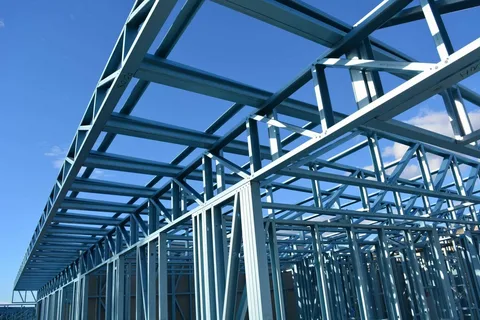The Ultimate Guide to Kit Building Industrial Buildings
In the realm of construction, the concept of kit building industrial buildings is revolutionizing the way structures are erected. From warehouses to factories, kit building offers a cost-effective and efficient solution for creating robust industrial spaces. In this comprehensive guide, we will delve into the intricacies of kit building industrial buildings, exploring its benefits, process, and key considerations.
Understanding Kit Building Industrial Buildings
What are Kit Buildings?
Kit buildings, also known as prefabricated or pre-engineered buildings, are structures that are manufactured off-site in standardized sections which are then transported and assembled on-site. These buildings can range from simple storage units to complex industrial facilities, offering versatility and scalability.
The Rise of Industrial Kit Buildings
With advancements in technology and manufacturing processes, the popularity of kit building industrial buildings has surged in recent years. Industries are increasingly turning to prefabricated solutions due to their cost-effectiveness, rapid construction time, and high-quality materials.
Benefits of Kit Building Industrial Buildings
- Cost-Effectiveness: Kit buildings eliminate many of the expenses associated with traditional construction, such as labor costs and material wastage. This makes them an attractive option for businesses looking to minimize expenditure.
- Speed of Construction: Prefabricated components are manufactured in a controlled environment, allowing for faster construction times compared to on-site building methods. This accelerated process can significantly reduce project timelines.
- Quality Assurance: Components of kit buildings undergo rigorous quality control measures during manufacturing, ensuring consistency and reliability in the final structure. This results in buildings that meet or exceed industry standards.
- Versatility: Kit buildings can be customized to suit the specific needs of industrial applications. Whether it’s a warehouse, manufacturing plant, or distribution center, prefabricated solutions offer flexibility in design and functionality.
- Sustainability: Many kit buildings incorporate environmentally-friendly materials and construction practices, making them a greener alternative to traditional building methods. Additionally, the modular nature of prefabricated structures allows for easier disassembly and recycling.
The Process of Kit Building Industrial Buildings
- Design Phase: The process begins with thorough planning and design. Clients work closely with architects and engineers to conceptualize the layout and specifications of the industrial building.
- Manufacturing: Once the design is finalized, components are fabricated off-site in specialized factories. This includes structural elements, wall panels, roofing systems, and other building modules.
- Transportation: Finished components are transported to the construction site using trucks or shipping containers. Careful logistics planning ensures that deliveries are coordinated efficiently to minimize delays.
- Assembly: On-site construction teams assemble the prefabricated components according to the predetermined design. This typically involves bolting or welding the sections together to form the complete structure.
- Finishing Touches: After the main structure is erected, finishing touches such as interior fit-outs, electrical wiring, plumbing, and insulation are added to complete the building.
Key Considerations for Kit Building Industrial Buildings
- Site Selection: Choosing the right location for your kit building is crucial. Factors such as accessibility, zoning regulations, and environmental considerations should all be taken into account.
- Building Codes and Regulations: Ensure compliance with local building codes and regulations governing industrial construction. This may include obtaining permits and approvals from relevant authorities.
- Customization Options: While kit buildings offer standard designs, many suppliers offer customization options to tailor the building to your specific requirements. Consider factors such as layout, size, and functionality when selecting a design.
- Long-Term Maintenance: Factor in long-term maintenance and operational costs when planning your kit building project. Choose durable materials and consider maintenance requirements to ensure the longevity of the structure.
- Supplier Selection: Research and select a reputable kit building supplier with a track record of delivering quality projects on time and within budget. Consider factors such as experience, expertise, and customer reviews when making your decision.
Conclusion
Kit building industrial buildings represent a modern and efficient approach to industrial construction. From cost-effectiveness to sustainability, the benefits of prefabricated solutions are undeniable. By understanding the process and key considerations involved, businesses can harness the power of kit building to create innovative and functional industrial spaces tailored to their needs.
FAQs
Q: Are kit buildings suitable for all types of industrial applications?
A: Kit buildings can be customized to suit a wide range of industrial applications, including warehouses, manufacturing facilities, distribution centers, and more.
Q: How long does it take to construct a kit building industrial building?
A: The construction timeline for kit buildings varies depending on factors such as size, complexity, and site conditions. However, prefabricated solutions typically offer shorter construction times compared to traditional building methods.
Q: Are kit buildings environmentally friendly?
A: Many kit buildings incorporate sustainable materials and construction practices, making them a greener alternative to traditional building methods. Additionally, the modular nature of prefabricated structures allows for easier disassembly and recycling.
Q: Can kit buildings be expanded or modified in the future?
A: Yes, one of the advantages of kit buildings is their flexibility. They can be easily expanded or modified to accommodate changing needs or growth in the future.

